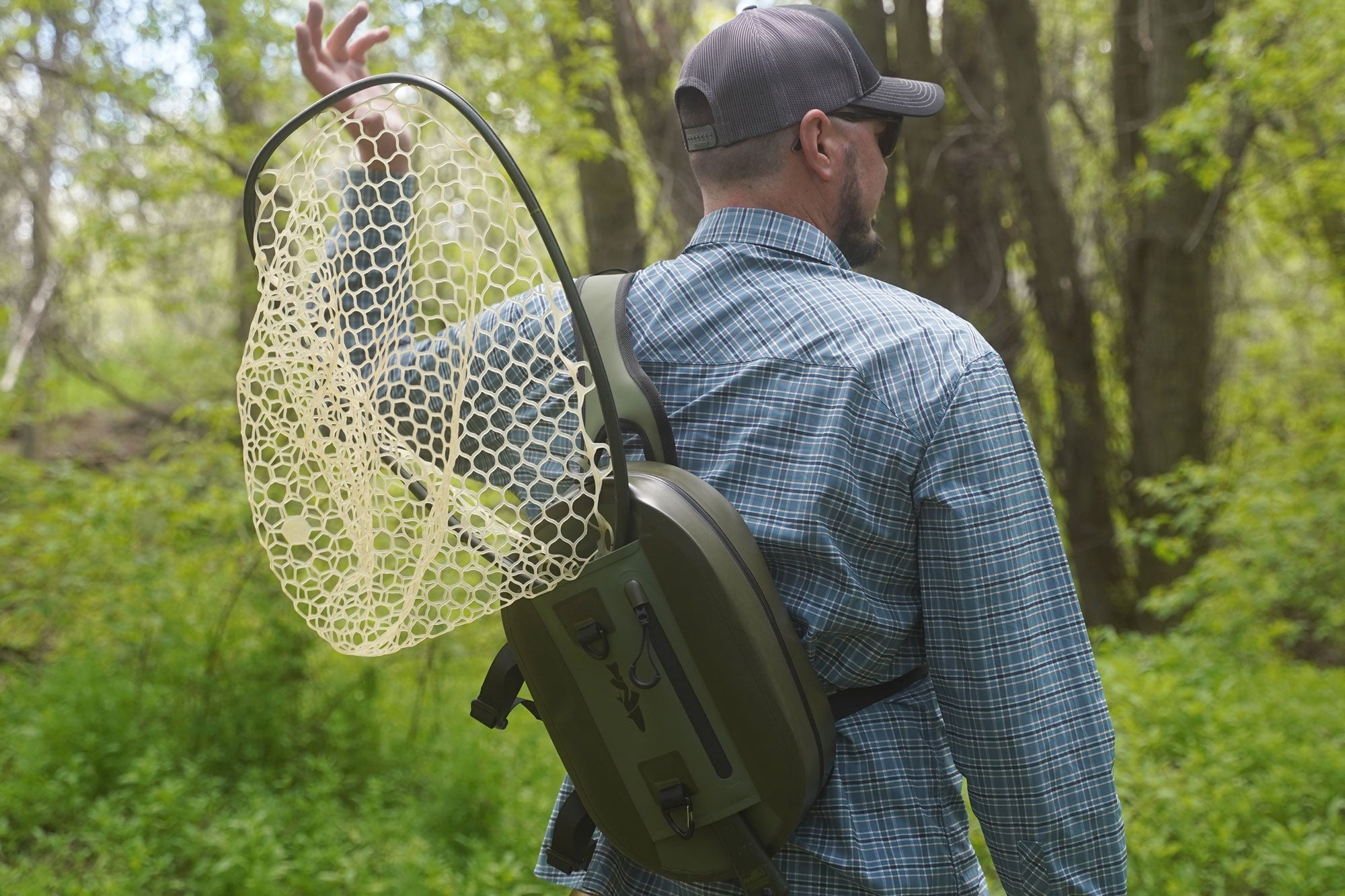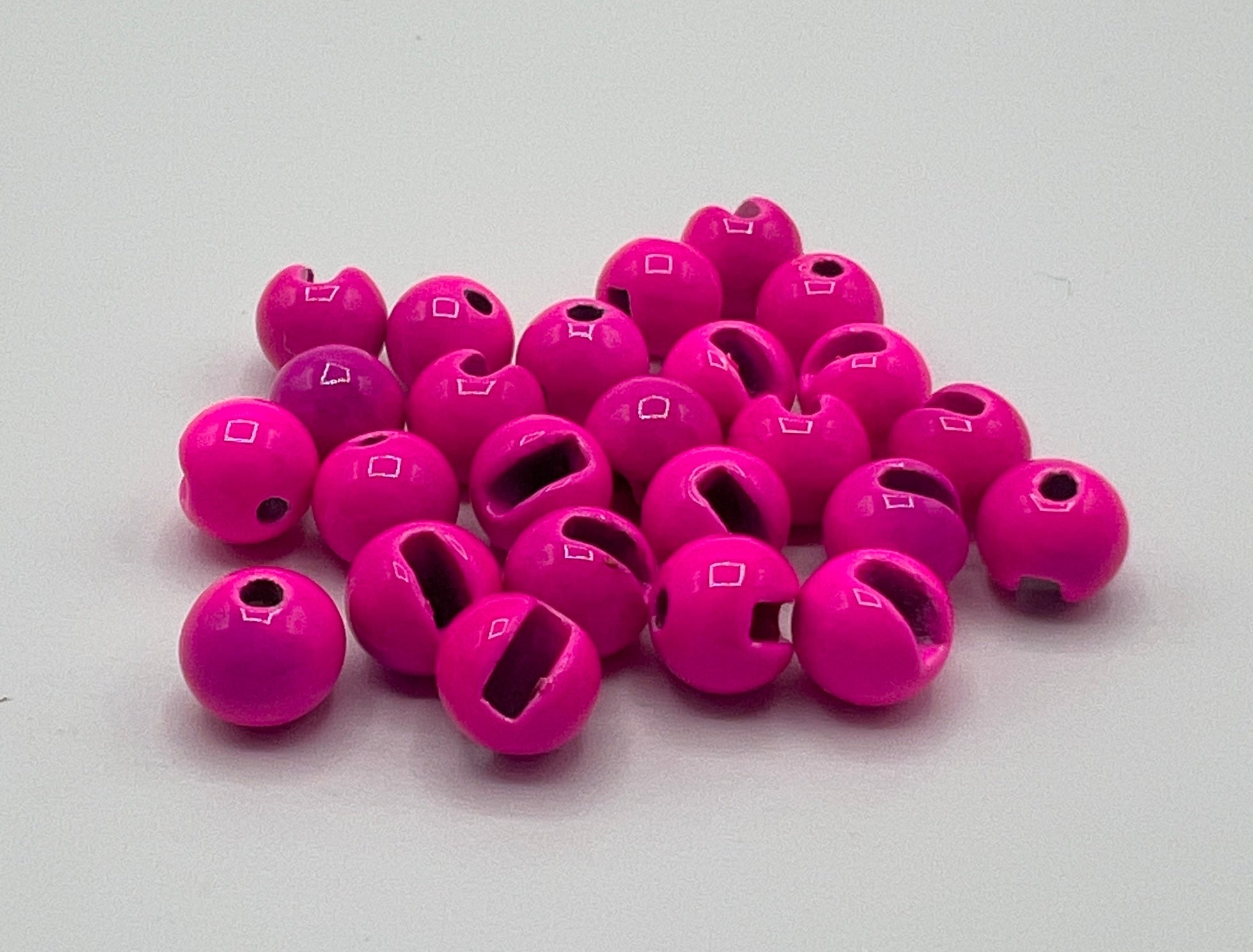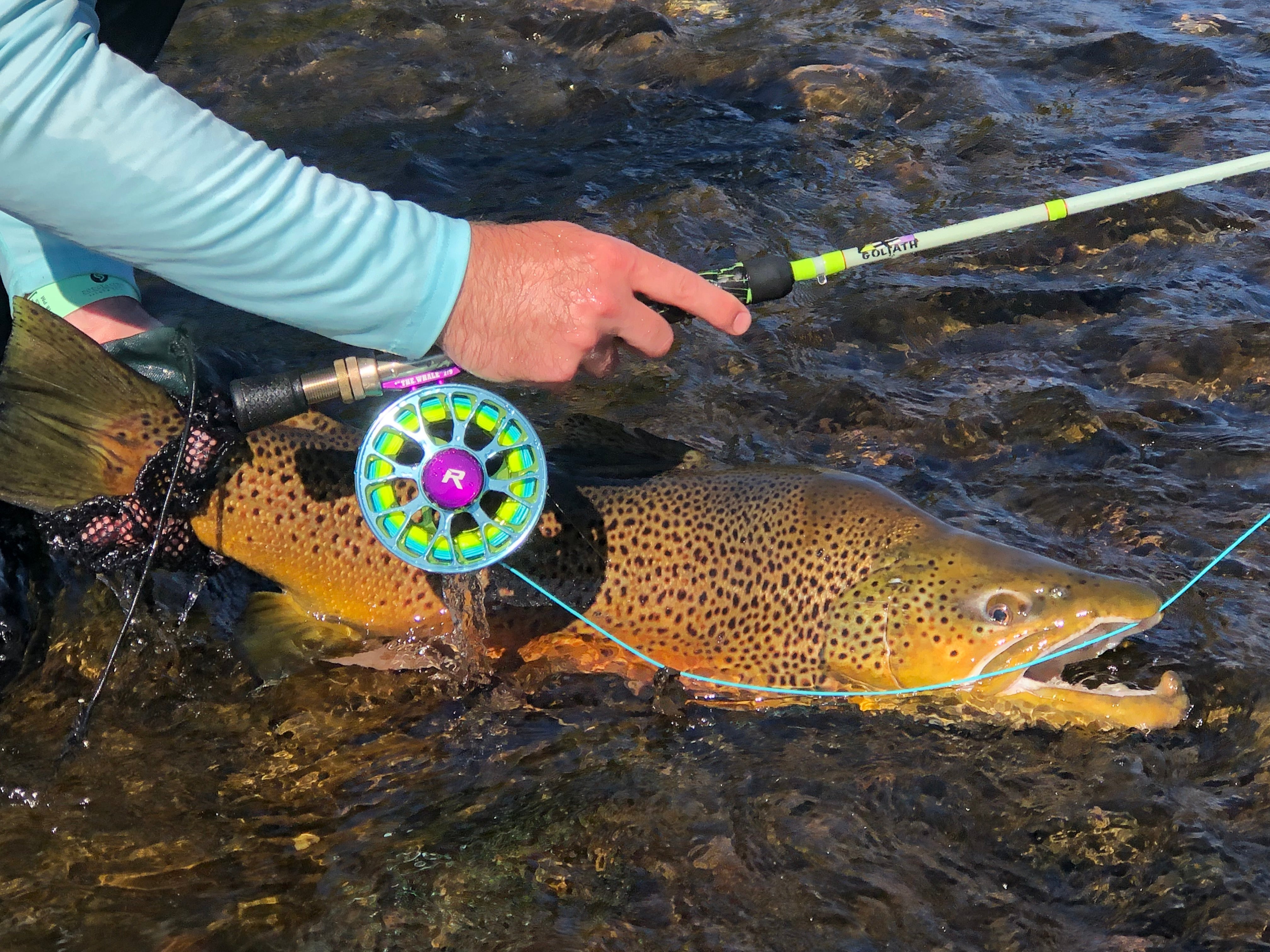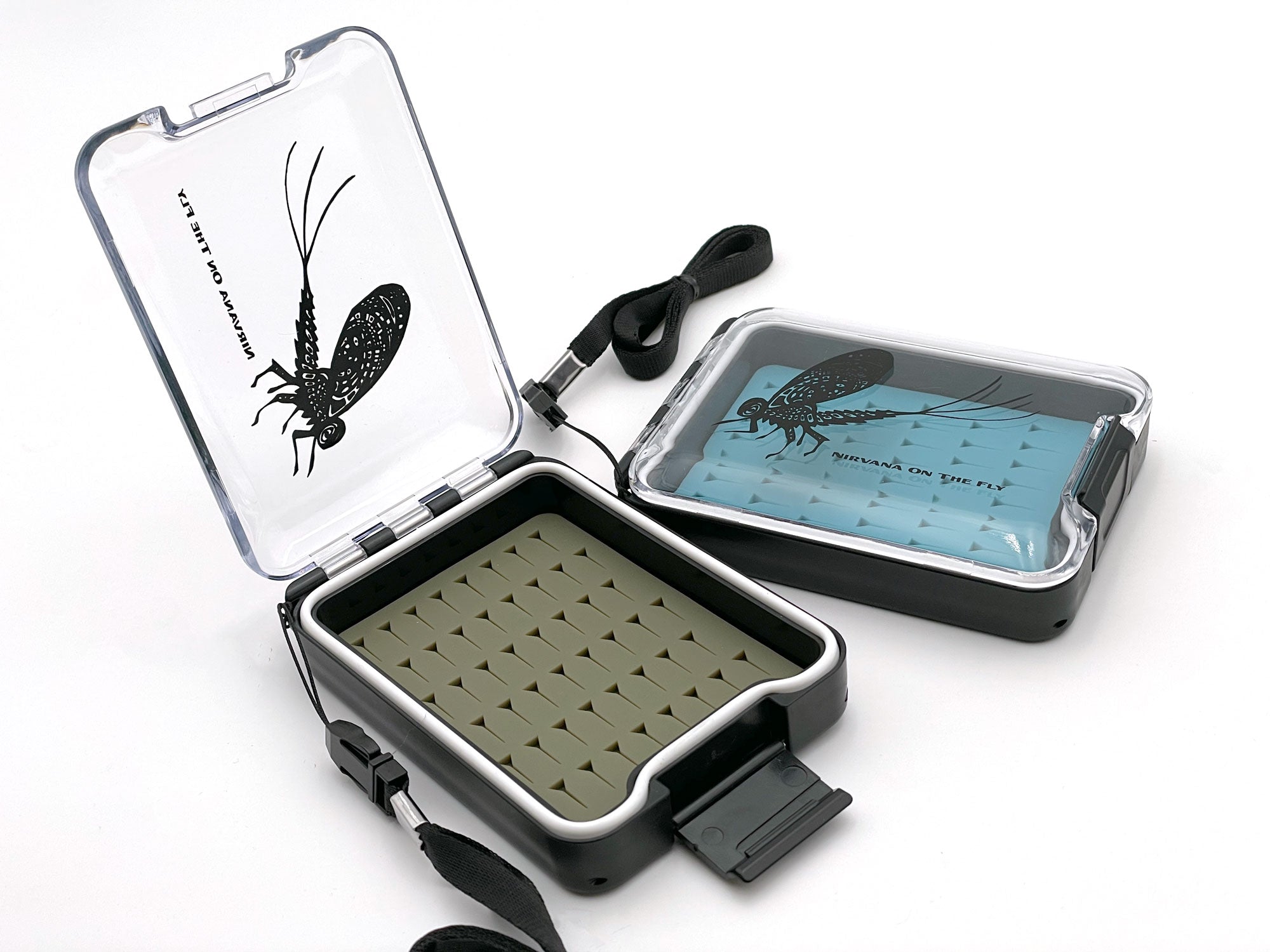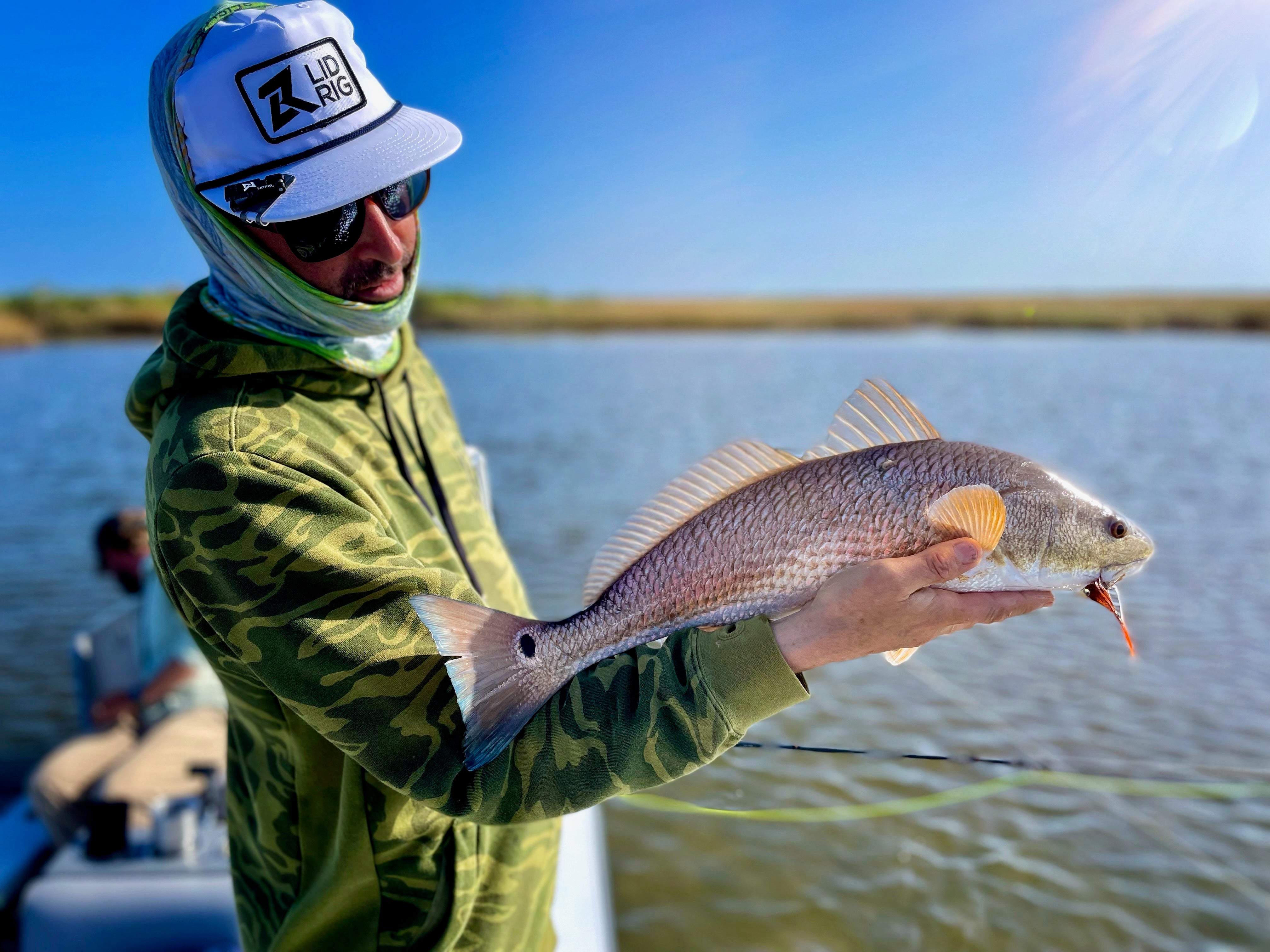How to Stay Warm When Winter Fly Fishing
My opinion is that fly winter fly fishing is frankly better than summer. There are fewer anglers on the water, the sound of the wind and crystals of snow and ice being blown around are like a symphony. Lastly, the local river I have is like clockwork for a morning size 22 midge hatch that is like dry fly heaven for trout. The only downfall is that it takes a bit for you to understand how to stay warm and comfortable. I think it was two seasons before I decided, “Enough is enough with this cold!”
It was then that I decided to buckle down and get myself situated in the cold. Cold hands, cold feet, and sometimes just flipping cold. Anyway it came, I didn’t care because I was ready to deal with it. You see, before that, I was just worried about getting out, and then I finally figured out that there is getting out and getting out comfortably.
The next phase was breaking it down. What was cold, how detrimental was it, and what could I do about it? Following that was dealing with it but not being uncomfortable and being able to remove layers to stay comfortable and efficient as the day went on. I immediately went back to my older techniques of doing the same for backcountry skiing, ice climbing, and ski mountaineering. All of those techniques worked, but the activity was high, so the best comparison I found was belaying on an ice climb or skiing while ski mountaineering. The less active aspects of each sport are more in line with the activity of winter fly fishing.

Here I am on the Green River in Utah during a cold but dry winter day.
Here are the critical items I found to stay consistently warm regardless of the temperatures.
Dealing with cold, especially when often wet conditions and scenarios are imminent, is actually serious business. It can get serious fast, but more often than not, it is about being comfortable. Sometimes, we forget that we fly fish for fun. With all the latest gear, there is absolutely no reason to be cold. Here are all the essential items to keep you warm during winter fly fishing, along with reasons why each is crucial. Lastly, when purchasing, consider drab colors that will blend in with your surroundings and or the sky. The bright colors look great in photos but they are certainly a warning sign for skittish fish.

Exploring winter fly fishing streams where nobody is in sight
- Layered Clothing System:
- Thermal Regulation or Modulation: By wearing multiple layers, you can easily regulate your body temperature. If you start to get too hot, you can shed a layer; if you get cold, you can add one. Multiple layers provides the modulation flexibility in adjusting insulation to match activity levels and ambient conditions that you go through throughout the day or level of activity.
- Moisture Management: Moisture (from sweat or external sources) can greatly reduce the insulating properties of certain materials. A typical layering system starts with a moisture-wicking base layer that transports perspiration away from the skin. This helps the body stay dry and reduces the risk of cooling due to evaporation. Mid-layers and outer layers then further manage or prevent external moisture while allowing internal moisture to escape. Critical to the system is the multitude of layers and the ability to prevent moisture and wick moisture. It is a system of tools that complement and aid your natural heating and cooling system.
- Insulation: Middle layers, often made of materials like fleece or wool, trap air and provide insulation. They can be adjusted depending on the temperature. Insulation can get technical quickly, so let’s dive into it a little bit for better understanding. The body can regulate temperature, and the technical benefits of multiple layers can be is often understood in terms of the following principles:
- Trapping Air: One of the primary principles of insulation is trapping air. Air is a poor conductor of heat and serves as an insulator when trapped in small pockets. Materials like fleece, down, and wool inherently do this with their fibrous or fluffy structures. By wearing multiple layers, you are effectively creating several pockets of trapped air, not just within the material itself but also between layers. Each of these pockets reduces the transfer of heat.
- Wind Protection: The outermost layer in a layering system is typically windproof. Wind can strip away the warm layer of air that surrounds your body. By stopping the wind, the outer layer helps maintain the insulating properties of the underlying layers.
- Minimizing Heat Conduction: Direct contact between a cold surface (like snowy ground or ice-cold water) and the skin can rapidly draw heat away from the body. Multiple layers reduce this direct contact, minimizing the rate of heat conduction away from the body.
- Radiation Loss: The human body emits infrared radiation, which can be thought of as radiative heat loss. Some advanced cold-weather garments incorporate materials designed to reflect this radiation back towards the body, reducing heat loss.
- Mitigation of Cold Spots: Single-layered systems might have inconsistencies in insulation, leading to cold spots. Multiple layers help ensure that areas with potentially less insulation in one layer are likely covered by another layer, reducing the chance of cold spots.
- Core Temperature and Blood Flow: From a medical standpoint, core temperature and blood flow are intrinsically linked. The body always aims to maintain the core temperature within a narrow range. Blood flow plays a crucial role in this by redistributing heat from the core to the periphery and vice versa. When exposed to cold conditions, such as during winter fly fishing in cold waters, the body will prioritize maintaining core temperature by reducing blood flow to the extremities. This can keep vital organs warm but at the risk of cold injuries to the fingers, toes, and other extremities. Proper insulation and awareness can mitigate these risks. In winter fly fishing, we rarely see core temperatures plummet unless we go in the drink and are soaking wet. This is an emergency situation, but honestly, it rarely happens. More commonly, we see the sacrificial side of core temperature and blood flow. We have a lower core temperature, and therefore, the toes, fingertips, and other extremities are inhibited. The cold feelings we so typically experience are this lack of warm blood flow.

My winter fly fishing buddy Olive is never cold.
Now that we know the problems and several ways to provide solutions let's take a deep dive into the suggested gear list toward making your day awesome.
When selecting a layering system for cold weather, it's important to choose materials and layers that work well together. The idea is to maximize the benefits listed above while minimizing potential drawbacks like excess weight or reduced mobility.
I’m not going to use electric technology. There are options for that out there, but you are limited on time. Secondly, when traveling, a non-electric system doesn’t fail and leaves you “up the creek.” At home and with a system that you are willing to maintain, this can be an absolute joy. However, there are limitations, but at the same time, there are advantages. I’ll work from head to toe for you and hands last so we can tackle it systematically.

February in Arkansas is cold but the streamer bite is on fire
How to Protect Your Body While Winter Fly Fishing
- Thin Hat - synthetic or wool - The key here is thin. Minus33 is a favorite Merino Wool brand of mine. They have super high-quality Merino Wool products.
- Neck gaiter or buff - Thin to win, again here. The Minus33 version is legitimate. They actually finish the edges and complete the product vs. the cheaper, thin and non-wind resistance versions.
- Baselayer Shirt - synthetic or wool - Patagonia is great for a synthetic Merino Wool mixture. Their baselayer capeline Air is light and ideal. The baselayer is also a start to a great system. I also like Minus33, and their layering system can be considered too.
- Mid-Layer Jacket - Still thinner but has loft to it so that you can create air space between here and the base layer. Again, I love the Patagonia layering system. They have a plethora of technical fleeces to choose from. I love the TechFace R2 Jacket.
- When looking at a Mid-Layer, I want the following.
- Full Zipper - I zip this down or shed the layer to cool down in many situations.
- Hand Pockets - This is a layer that can be worn on the outside or on multiple occasions, so hand pockets are ideal.
- Chest Pocket - I don’t buy shirts without them anymore. My phone, keys, wallet, grocery list, etc., always seem to end up in there.
- Hooded Puffy Jacket - Synthetic is the only way to go. The moisture thermal capabilities are a winter requirement. A hood is critical as it is typically your primary layer-shedding aspect for the head and general body temperature.
- If you want to maintain joint flexibility, consider jackets with thinner areas around joints, like the Black Diamond Vision Hybrid jacket. This is the jacket I use, and it has that critical chest pocket.
- Waterproof Jacket - I prefer a heavy 3-ply GoreTex jacket. The toughness, water, and wind resistance are key. Look for one that is designed for fly fishing so you have the external bells and whistles that are ideal for the sport. Also, make sure that it has wrist gaiters to keep water out. This is critical when rowing or holding fish. Having a gaitor will keep water from rolling down your wrists and up your sleeves, therefore soaking every layer on your arms. Lastly, consider the number of pockets and flaps on the outside. If you wear a fly fishing vest or a bag, you may not need those. Others, go minimalist when they know they will have a jacket on and want the pockets to transfer a few key items. Simms Fishing and Grundens have great jackets. I personally have a Patagonia jacket that is no longer offered.
- Non-Cotton Underwear - Wool or capeline are preferred. Patagonia Capeline boxers are a favorite of outdoor enthusiasts. Minus33 has boxer briefs and more.
- Baselayer Pants - I prefer the mixed soft merino wools for the same reasons listed above. I do, however, prefer one other difference. I like a three-quarter length pant leg or clam digger style, so I don’t bulk up on my lower leg. Minus33 has the three-quarter baselayer I use.
- Mid-Layer Pants - Here is one of my favorites. I prefer synthetic puff pants that go on outside my baselayer but under my waders. This is probably one of the best investments I’ve made for staying warm in winter. Synthetic is key because if you get wet or end up sweating a lot, they still insulate very well. Otherwise, I like a style that I can wear after I take off my waders that doesn’t look like I have my pajamas on. The Simms Fishing Cold Weather Pants are my personal go-to.
- Waders - Waders are key. Good high-end waders make a difference, and in the good high-end waders, there is only one winter wader I prefer. That is a boot-fit wader by Simms. The boot-fit waders keep your feet warm it is an entirely different insulation method and formula, keeping your feet far away from that cold weather as possible. The good news is that if you only use them in winter and care for them, they will last a long time.
- Here is a wader review
- Follow my tip regarding filling them with silica packets
- Thin Wool or Thermal Socks - I again prefer wool. With socks, most people think heavy socks are warm socks. Yes, they are when you are sitting around a fire. Otherwise, they are just about useless because most take up too much space and or are to tight and limit circulations. Get a good pair of mid-height Merino Wool socks that are slightly loose-fitting and thin. Create space in your boots and keep the blood flowing easily in your feet. I like the Minus33 Merino Wool Socks in boot height.
- OK, You Like Heavy Socks - The key is loose fitting and abundant room in your boot and neoprene socks. The problem is most buy those items with thin cotton socks on when testing, so if you go with a heavier sock, you need to adjust accordingly.
Cold days of winter fly fishing with cold hands.

How to Protect Your Hands While Winter Fly Fishing
- (Alternative) Nitrile gloves - on really cold days, these can go a long way. You have dexterity, but you keep your hands dry. Some people swear by them, so I’m going to include them. Personally, I don’t care for them. I do suggest you try them a few times before you say no.
- Tea Towel or Shammy - I prefer a no-glove hands. I wear gloves in and out of the location and in between spots. Otherwise, I prefer my pockets. Instead, I am more than extremely diligent about keeping or getting water off my hands as quickly as possible. I stuff a towel in the top of my wader and immediately dry my hands of any moisture. Moister from flies, catching fish, leaning on a hill, whatever it is that gets my hands wet, I don’t care as long as they are bone dry afterward. I also have a towel clip on the outside of my jacket to keep my towel dry. This is possible in Utah, but in damper areas like my home town, Pittsburgh, it will not work.
- Here is a double-ended clip I use to keep from losing it.
- (Alternative) Hand Warmers - Hand warmers in your outside pockets can be a game changer. Sometimes, I use them, but often not. My hands are pretty good, though, so I’m lucky that way. If you get cold hands, put a hand warmer in each pocket. Cast and catch with one hand if needed and keep that other one warm. This can be key when you just caught a fish and dipped your hand.
- This is the waterproof electric version
- You can also use the disposable versions
There it is, a complete outfit for keeping yourself warm and comfortable when winter fly fishing. I’ve suggested a number of items that I prefer for you to invest in. I have used this system for several years, and it has made a tremendous difference in my comfort levels during winter fly fishing.
Best of luck to you out there, and go enjoy the winter solitude!
Download the Tips and Tricks eBook

By Christian Bacasa
Host of the Fly Fishing Insider Podcast
www.ffipodcast.com
@flyfishinginsiderpodcast
@dupeafish




